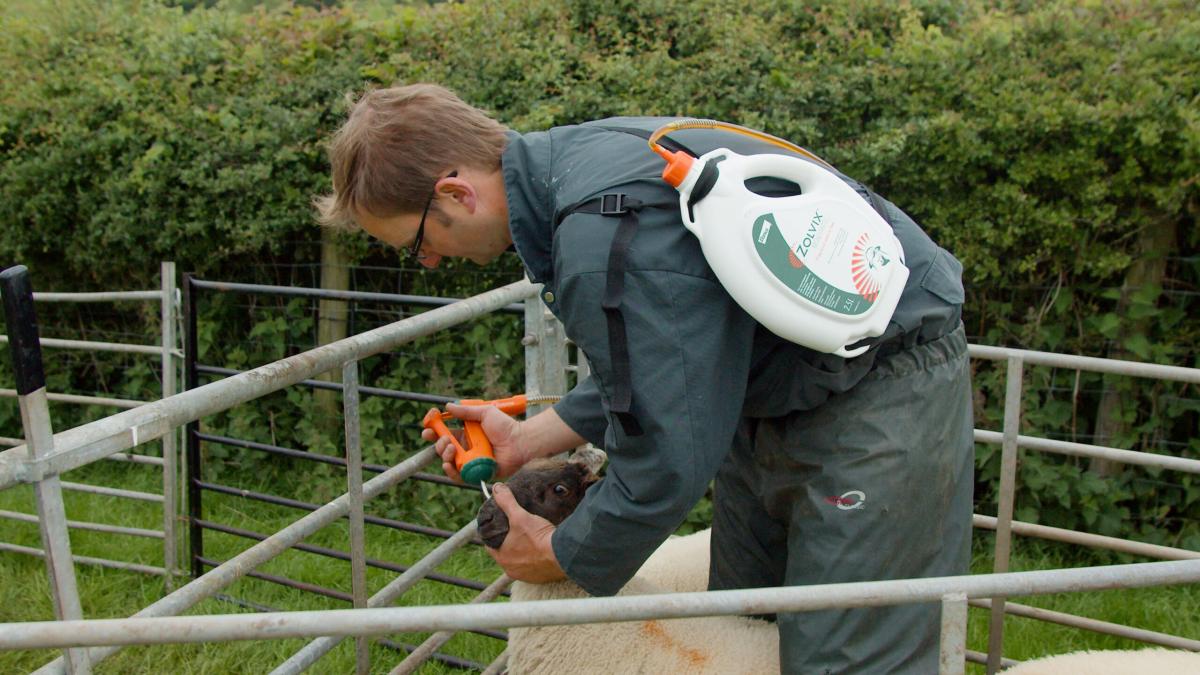
Worming with Zolvix: A guide.
Worms are one of the most common health problems for young lambs. It can cause weight loss, scour, poor growth rate, and in the worst case, death. Fortunately, however, it can be prevented. Zolvix Oral Solution is a broad spectrum anthelmintic for the treatment and control of gastrointestinal nematode infections (Worms) and associated diseases in sheep. This article was made to inform on the plight that occurs when these infections reach your livestock, as well as to explain why overuse can also have a dangerous impact.
Managing the gut roundworm burden in lambs is essential if lambs are to grow well, and reach slaughter weight (or tupping weight for replacement ewe lambs), with minimal concentrate feeding and extra cost.
Planning the season’s worm management strategy can start before lambs are born. Assessing pasture contamination from the previous grazing season (a major factor in spring and early summer parasite challenges) allows the grazing management plan to be tailored to avoid grazing young lambs on high-risk pastures.
Wormers are vital for any worm control plan, but reliance on wormers in the past has led to the development of anthelmintic resistant worm populations. Most farms will have a degree of resistance to one or more of the three older wormer classes1,2,3. Worryingly, around one-quarter of farms had resistance to more than one active1.
While wormers may appear to be working, enough worms can be left behind after treatment to significantly impact growth rates, which can be reduced by up to 50% without any visible signs4.
Checking to see what has been left behind after any treatment is the best way to identify the problem early.
Grazing management can help manage worm challenges and reduce reliance on wormers. When wormers are used, three factors will drive the development of resistant worm populations4:
1) Overuse e.g. frequent use of the same group or dosing animals ‘just in case’ when the worm burden is low
2) Under dosing (under-estimating animal weights and/or not calibrating dosing equipment) - allows more worms to survive treatment, increasing the frequency of resistant genes in the population
3) Worming animals when the refugia population is low (i.e. the part of the worm population not exposed to the treatment, e.g. worm eggs and larvae on pasture). This reduces the chance of ‘diluting’ resistant worms surviving treatment, most likely when lambs are dosed and moved to clean pasture, or when ewes are wormed at lambing time.
The worm challenge to grazing lambs is heavily weather dependent. The hot dry conditions of summer 2018 meant that there was little or no worm challenge from June to August on many farms, with no need to treat during those months. The warm, damp autumn that year allowed the worm population to flourish, so the level of worm challenge increased dramatically from September to November. The recent warm weather has already given an early Nematodirus challenge in some areas. See
Checking lamb dung samples for worm egg counts is an easy way to monitor worm burdens and ensure lambs are treated when they need it, and treatments are not wasted when burdens are low. Collecting 10 fresh samples for a pooled worm egg count will give a good indication of the worm burden in the group, and if samples are collected 7 days after treatment with a grp 2-LV (yellow) wormer, or 14 days after all other groups, will let you know if any worms have been left behind. As the predominant worm species changes through the grazing season, repeating the ‘drench check’ after every treatment will give an idea of which worms are surviving which treatments. See https://farmanimalhealth.co.uk/uk-fah-worms for video tips on sampling.
Grp4-AD (orange) and Grp5-SI (purple)
These are the newest groups available, and to date, there has been very little resistance detected worldwide to either group. Effective worm management relies on the strategic inclusion of the newer actives now.
Zolvix™ (monepantel, grp4-AD) should be used as a farm protection (quarantine) dose for all incoming sheep to avoid buying in resistant worms (see www.scops.org.uk for guidance on effective quarantine treatments) and as a break dose for all remaining lambs. The timing of this treatment will vary depending on summer weather conditions and should replace one dose of a Group 1, Group 2, or Group 3 wormer in the second half of the grazing season. This removes any resistant worms left behind by previous treatments, allowing lambs to reach their growth potential and make the most of late-season grass. It also reduces the number of resistant worm eggs reaching pasture in the autumn, which as mentioned earlier is a major factor affecting pasture worm burdens in the spring.
We have a dedicated Zolvix brand page on Stowag.com to supply you with Zolvix and the according accessories, as well as more information & videos on the importance of worming.
Shop Now: https://bit.ly/3SjKL4o
If you have any further questions on the control of gastrointestinal nematode infections, or anything else, please ask any of our helpful in-store staff, or call us on 01415 830 400 today.
References:
- Wales Against Anthelmintic Resistance Development (WAARD) Final Report 2015
- McMahon et al Anthelmintic resistance in Northern Ireland (I): Prevalence of resistance in ovine gastrointestinal nematodes, as determined through faecal egg count reduction testing Veterinary Parasitology 195 (2013) 122– 130
- Glover, M., Clarke, C., Nabb, L., Schmidt, J., 2017. Anthelmintic efficacy on sheep farms in southwest. England. Vet. Rec. 180 (15), 378.
- www.scops.org.uk
Zolvix contains monepantel and is indicated for treatment and control of gastrointestinal worms in sheep. Legal category POM-VPS. Refer to the product packaging and leaflets for information about side effects, precautions, warnings and contraindications.
Use medicines responsibly www.noah.co.uk/responsible
